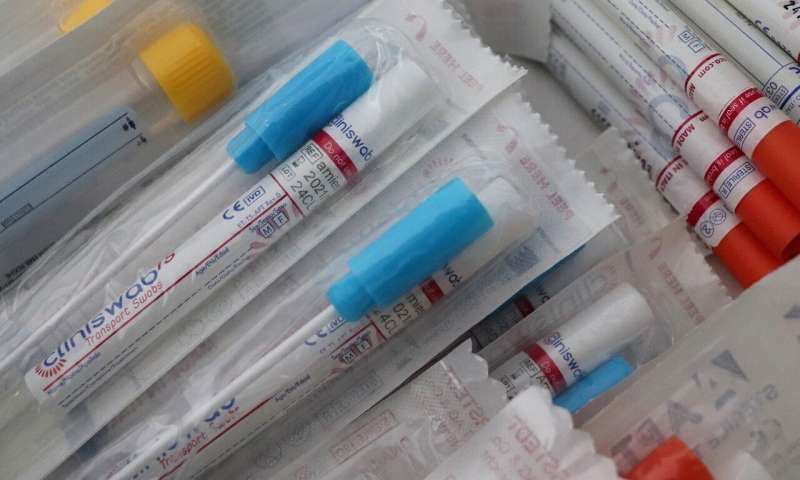
University of Sheffield scientists and Yorkshire company Paraytec have developed a more accurate, efficient and low cost COVID-19 test.
The new test detects intact virus particles and gives an accurate result in five minutes. It is sensitive enough to detect as few as 1,000 virus particles in a patient sample—the average COVID-19 patient has around one million virus particles at the height of infection.
Professor Carl Smythe, from the University of Sheffield’s School of Biosciences who led the work with Paraytec, said: “What distinguishes this test from the technology already available like PCR (polymerase chain reaction) and Lateral Flow Tests is its speed and the fact it detects intact viral particles.
“The detection of intact particles is important as their presence is a very good indicator of infectiousness compared with a PCR test which detects gene fragments, these gene fragments can persist in people’s noses and throats for extended periods of time.
“Lateral flows on the other hand are quicker than PCR tests but aren’t as sensitive as they only give a positive result when there are large amounts of viral material in a sample, so they often cannot identify pre-symptomatic or asymptomatic people.”

The aim of the work was to develop a different approach to testing which can provide cost-effective, fast, point-of-care results to allow healthcare providers a way to quickly distinguish COVID-19 patients and ensure they receive timely treatment.
The test could also be used at large venues such as arenas, stadiums or airports to enable people to establish their COVID-19 status in a way that is quicker than both PCR and Lateral Flow tests and cheaper than a PCR.
The test works by using a fluorescent dye which targets the proteins present in the virus, the sample then travels in front of a viewing window which detects the fluorescent light and converts the result into an easy to understand result.
The display will then show the result, green for negative and red for positive, which the user can then scan in via QR code to record their result. The new method has been tested using clinical samples from Sheffield Teaching Hospitals
Source: Read Full Article